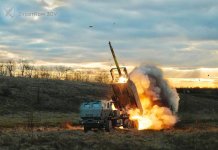EurAsia Bridge: The construction of the high-speed highway (VSM) “Eurasia”, which will connect Europe and China, may be completed in 2026. This is stated in the presentation of JSC “Russian Railways”. At the same time, the beginning of construction of different sites varies from 2018 (BCM Moscow to Kazan) to 2023 (Krasnoe – Moscow, Chelyabinsk – Zolotaya Sopka).
According to the presentation, the project can be implemented using an infrastructure mortgage. Also, among the possible measures of state support are mechanisms of public-private partnership and concessions, state guarantees, special interest contracts, a capital grant and direct subsidies, tax incentives and returnable tax financing.
The mechanism of “infrastructure mortgage” for investors to suggest to introduce in Russia, Russian President Vladimir Putin at the plenary session of the St. Petersburg International Economic Forum. He noted that this is a scheme when an infrastructure facility is actually bought on credit received from private investors, and the users of the facility are gradually repaying this loan. Thus, the return of investment is proposed to be carried out through regular payments that will come from the main beneficiaries of infrastructure facilities, that is, from budgets of different levels, infrastructure monopolies, etc. To ensure payments, the mechanism of state guarantees can also be used.
Who will Finance the EurAsia Bridge project?
The SCM project can be financed with the participation of the Russian Direct Investment Fund (RFPI), the New Development Bank of BRICS, the Eurasian Development Bank, the Silk Road Fund and the Russian-Chinese Investment Fund, the presentation also says. In addition, it is expected to involve leading suppliers of equipment and construction companies in Russia, Europe, and China into the project.
Cost of Construction of EurAsia Bridge
The cost of the Russian section of the highway “Eurasia” is estimated at 3.58 trillion rubles.
At the same time, the total capital expenditure for the construction of the Brest-Belarus-Dostyk (Kazakhstan) section is 7.08 trillion rubles and 7.84 trillion rubles, including China (to Urumqi). It is assumed that VSM across Russia will pass from Krasnoe station (Smolensk region, not far from the border with Belarus) to Zolotaya Sopka station (Chelyabinsk region, near the border with Kazakhstan).
The total length of the Eurasia bridges will be 9,447 km (Beijing-Moscow-Berlin distance), including the Brest-Dostyk section (4,851 km, of which 2,366 km across the Russian Federation). The cost of building a Belarusian section from Brest to Krasnoe station is estimated at 0.85 trillion rubles, Kazakhstan (from the Golden Hills to Dostyk) at 2.66 trillion rubles.
The Purpose of Construction of EurAsia Bridge
The feasibility of the project is due to the growing volume of trade in goods with high added value, sensitive to the delivery time, the presentation of RZD says. In addition, the volume of electronic commerce is increasing, including between China and the EU. The expected additional increase in trade between China and the EU in the period until 2035 exceeds $ 720 billion, the document says.
Passenger traffic on the Eurasia Aircraft Bridge is estimated at 36.9 million passengers by 2050, forecast cargo traffic is 12.6 million tons, including 7.8 million tons in the direction of China-EU. High-speed cargo rolling stock will be designed on the basis of the passenger due to the lack of world analogues. The basic composition – 12 cars, the maximum speed – up to 350 km / h. The estimated cost of one freight and passenger train is estimated at 2.7 billion rubles.
At present, the Moscow-Kazan section is being designed, which in the future may become part of the Eurasia high-speed highway. The construction of the Moscow-Kazan VSM is scheduled for 2018, commissioning – for 2023. The length of the Moscow-Kazan SCM will be about 770 km, the speed of the trains will reach 400 km / h, on the route there will be stops after every 50-70 km. The travel time from Moscow to Kazan will make 3.5 hours by VSM against the current 14 hours.




